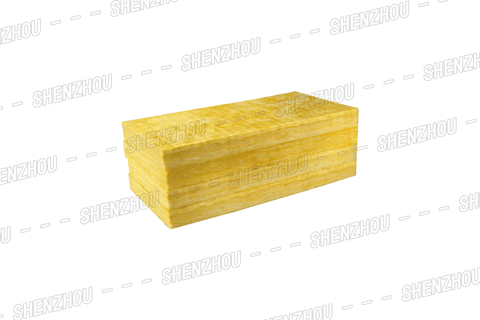
Comprehensive analysis of thermal conductivity of glass wool
6/26/20245 min read

Glass wool is a material with good thermal insulation performance, with a thermal conductivity coefficient between 0.035 and 0.045W/m · K. The smaller the value, the better the thermal insulation performance. The thermal conductivity is influenced by factors such as fiber diameter, fiber length, fiber material, and air layer thickness. When selecting and using glass wool, these factors should be considered to optimize its insulation performance.
Glass wool is a commonly used insulation material, widely used in fields such as construction and industry. Its thermal conductivity is one of the important parameters for evaluating its insulation performance. This article will introduce the thermal conductivity of glass wool and its influencing factors.
Categories
Popular
Applications of Glass Wool Board:
Interior Wall Compartments:
Enhances the functionality and aesthetics of interior spaces.
Ceiling Systems:
Provides effective insulation for ceilings, contributing to energy efficiency.
Insulation of Iron Sheet Air Ducts or Bellows:
Ideal for insulating ductwork, ensuring thermal efficiency.
Sound Absorption and Noise Reduction:
Reduces noise levels in machine rooms, creating a quieter working environment.
Exterior Wall Insulation:
Offers insulation for residential building exteriors, contributing to energy savings.
Glass Wool Insulation





1)、 The thermal conductivity of glass wool
The thermal conductivity of glass wool is usually between 0.035 and 0.045 W/m · K, making it a material with good thermal insulation performance. Thermal conductivity refers to the ability of a material to conduct heat, and the smaller the value, the better the insulation performance of the material.
2)、 Factors affecting the thermal conductivity of glass wool
1. Fiber diameter
Glass wool is mainly composed of glass fibers, and the smaller the fiber diameter, the lower its thermal conductivity. This is because the smaller the fiber diameter, the smaller the internal voids, and the more tortuous the heat transfer path, resulting in a decrease in heat transfer efficiency.
2. Fiber length
The length of glass fiber is also one of the factors affecting the thermal conductivity of glass wool. The longer the fiber length, the larger its overlap area, the longer the path for heat transfer, and the higher the thermal conductivity. However, when the fiber length exceeds a certain value, excessively long fibers are prone to agglomeration, which can actually reduce the thermal insulation performance of the material.
3. Fiber material
The material of fiberglass is also one of the factors affecting the thermal conductivity of glass wool. Different materials have different thermal conductivity, so choosing a suitable material can reduce the thermal conductivity of glass wool.
4. Air layer thickness
The thickness of the air layer in glass wool is also one of the factors affecting its thermal conductivity. Air is a poor conductor of heat, and the thicker the air layer, the better its insulation performance. Therefore, when choosing glass wool, it is advisable to choose materials with a thicker air layer as much as possible.
3、 Conclusion
Glass wool is a material with good thermal insulation performance, and its thermal conductivity is influenced by various factors. When selecting and using glass wool, suitable models and materials should be selected according to the actual situation, and attention should be paid to controlling factors such as fiber diameter, fiber length, fiber material, and air layer thickness to improve its insulation performance.
Shenzhou Energy Saving Technology Group Co., Ltd. is an energy saving and environmental protection enterprise integrating research and development, manufacturing and service of thermal insulation and sound absorption and noise reduction materials. The Group has six subsidiaries and ten industrial parks, producing five main series of products of rubber foam, glass wool, ceramic wool, sound absorption and noise reduction materials, and rock wool. Its products are widely used in construction, central air conditioning, refrigerator refrigeration, petrochemical, Marine locomotive, aerospace, thermal power, sound-absorbing noise reduction, and other industries.
After more than 40 years of exploration and sharpening, Shenzhou Group has become a leading manufacturer in the heat insulation and energy saving industry . The group covers an area of 1.06 million square meters, including a construction area of 680,000 square meters. Euipped with internationally advanced production equipment and technology, Shenzhou’s annual production volume of rubber foam is 2.6 million m³, glass wool 230,000 tons, rock wool 120,000 tons, and ceramic wool 28,000 tons. While solving the employment issue of more than 2,000 people, Shenzhou also created considerable economic and social benefits.

Why Choose SHENZHOU Glass Wool Board?
SHENZHOU® Glass Wool Board not only meets the essential requirements of thermal insulation but also excels in sound absorption and noise reduction. Its adaptability to various settings, coupled with the convenience of construction and installation, positions it as a leading choice for architects, builders, and contractors.
In conclusion, the broad application prospects of SHENZHOU® Glass Wool Board make it a comprehensive solution for enhancing comfort, energy efficiency, and acoustic performance across diverse projects. Choose SHENZHOU® for insulation solutions that go beyond expectations.










About Us
Click the button below to get more information about us
Newsletter
Click to subscribe for more information
Follow Us
Contact Us
Address
Dacheng town, Langfang City, Hebei province, China
Phone
+86 185 03165 626


